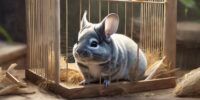How Many Chinchillas Breeds Exist and How Are They Categorized?
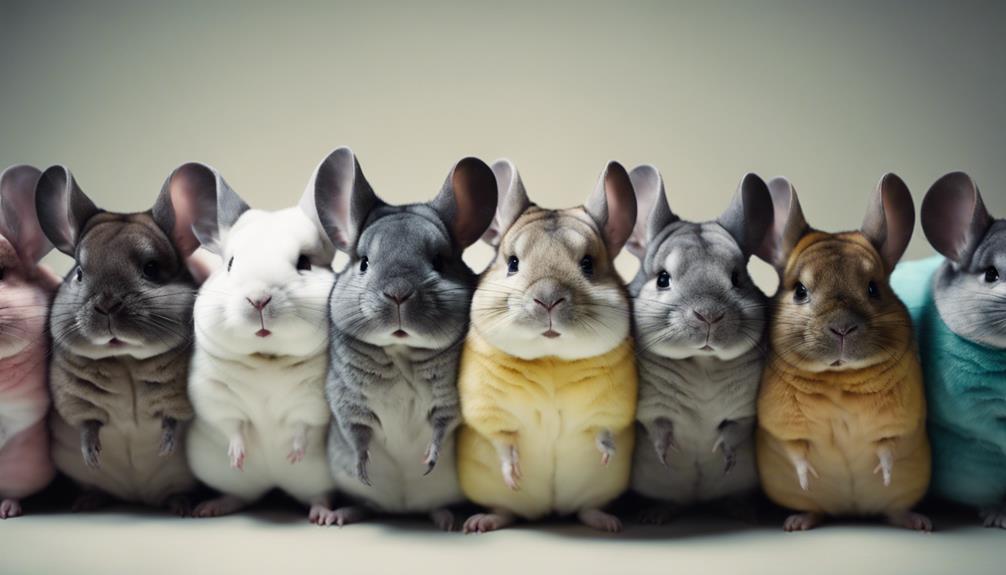
Chinchillas are primarily categorized based on their species and color variations rather than distinct breeds. The categorization within chinchillas often focuses on the fur color, quality, and texture. Here’s how chinchillas are typically categorized:
Species
There are two main species of chinchillas:
- Chinchilla lanigera – Known as the long-tailed chinchilla, this species is more commonly kept as pets. They are recognized for their longer tails, thinner necks, and smaller ears compared to the Chinchilla chinchilla.
- Chinchilla chinchilla (formerly known as Chinchilla brevicaudata) – This species, also referred to as the short-tailed chinchilla, is less commonly found in the pet trade. They have a stouter build, shorter tails, and larger ears.
Color Variations
Beyond species, chinchillas are further categorized by their fur color variations, which have been developed through selective breeding. Some of the most recognized color variations include:
- Standard Grey – The most common and natural color, resembling the wild chinchillas’ fur.
- White – Can be completely white or have shades of silver. This category may include Pink White (white with pink eyes) and Ebony White (white with dark eyes).
- Black Velvet (also known as Tov) – Characterized by a black or dark grey topcoat with a contrasting white belly.
- Beige – Ranges from light to dark beige, sometimes with pink eyes.
- Ebony – Covers a spectrum from light grey to solid black, including the belly.
- Mosaic – White with patches of another color, often resulting in unique and varied patterns.
- Violet – A deep purplish-grey, considered one of the more exotic colors.
- Sapphire – A rare blue-grey fur coloration.
- Blue Diamond – A very rare blue-grey color, known for its striking appearance.
Chinchilla Breeds Overview
Chinchilla breeds exhibit distinct physical characteristics and temperamental traits, making them unique in the world of domesticated small mammals. The popularity of different chinchilla breeds has led to diverse breeding practices aimed at accentuating specific traits. However, this focus on specific traits has raised concerns about genetic diversity within chinchilla populations.
Selective breeding for certain physical characteristics or behaviors, such as fur coloration or temperament, has been a common practice among chinchilla breeders. This has contributed to the rise of different chinchilla breed varieties, each with its own set of defining traits. While this has increased the appeal of chinchillas as pets, it has also raised questions about the conservation of genetic diversity among chinchilla populations.
Efforts to preserve genetic diversity among chinchilla breeds are crucial to maintaining the overall health and resilience of these animals. By promoting responsible breeding practices and conserving a wide gene pool, chinchilla breeders can help ensure the long-term viability of these unique small mammals in domestic settings.
Categorization of Chinchilla Breeds
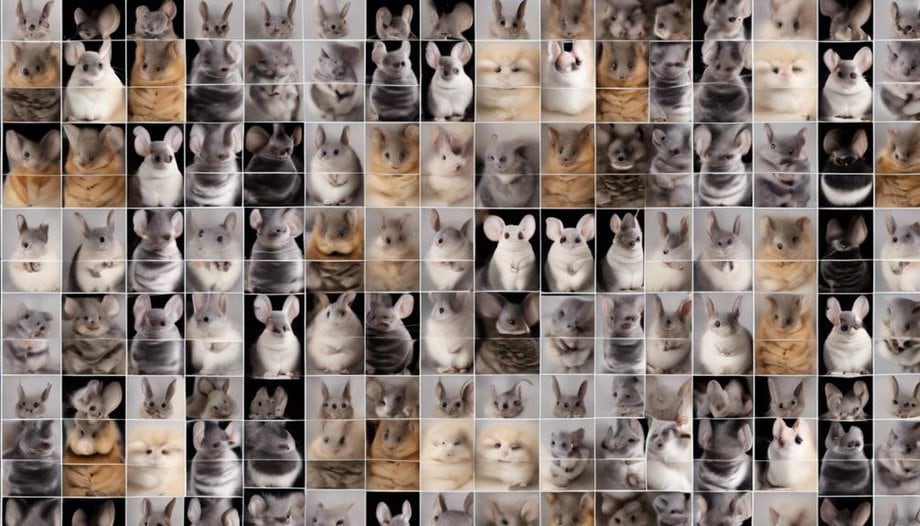
A systematic classification system distinguishes chinchilla breeds based on specific physical attributes and behavioral traits. Breeding standards play a crucial role in categorizing chinchilla breeds. Breeders adhere to strict guidelines concerning coat variations, such as fur color, density, and texture. Genetic selection is another key aspect in determining breed categories. Breeding patterns, including mating practices and lineage considerations, help maintain breed purity and distinct characteristics within chinchilla populations.
Coat variations are often used as a primary criterion for categorizing chinchilla breeds. The different coat types, ranging from standard to mutations like ebony or sapphire, are essential in defining breed characteristics. Additionally, breeding standards set by organizations and breeding associations further establish the guidelines for classifying chinchilla breeds based on their physical traits.
Popular Chinchilla Breeds
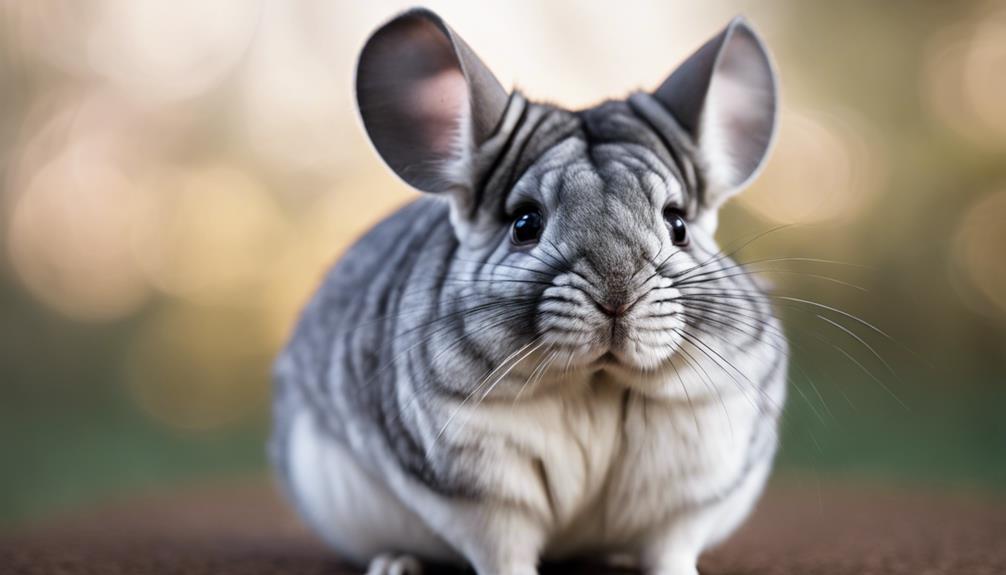
The distinct coat variations and breeding standards play a significant role in distinguishing popular chinchilla breeds within the classification system. These breeds are favored by chinchilla enthusiasts for their unique characteristics and temperaments.
Here are some popular chinchilla breeds:
- Standard Gray: Known for its classic silver-gray fur, the Standard Gray chinchilla is a widely recognized breed and a popular choice among pet owners.
- Black Velvet: With its luxurious black fur and soft texture, the Black Velvet chinchilla is highly sought after for its striking appearance.
- Wilson White: The Wilson White chinchilla stands out for its pristine white coat and charming personality, making it a beloved breed among chinchilla enthusiasts.
- TOV Ebony: The TOV Ebony chinchilla is cherished for its deep black fur and captivating dark eyes, adding an air of mystery to this breed.
When considering the adoption process for these popular chinchilla breeds, potential owners should also educate themselves on the specific care requirements to ensure a happy and healthy life for their furry companions.
Rare Chinchilla Breeds
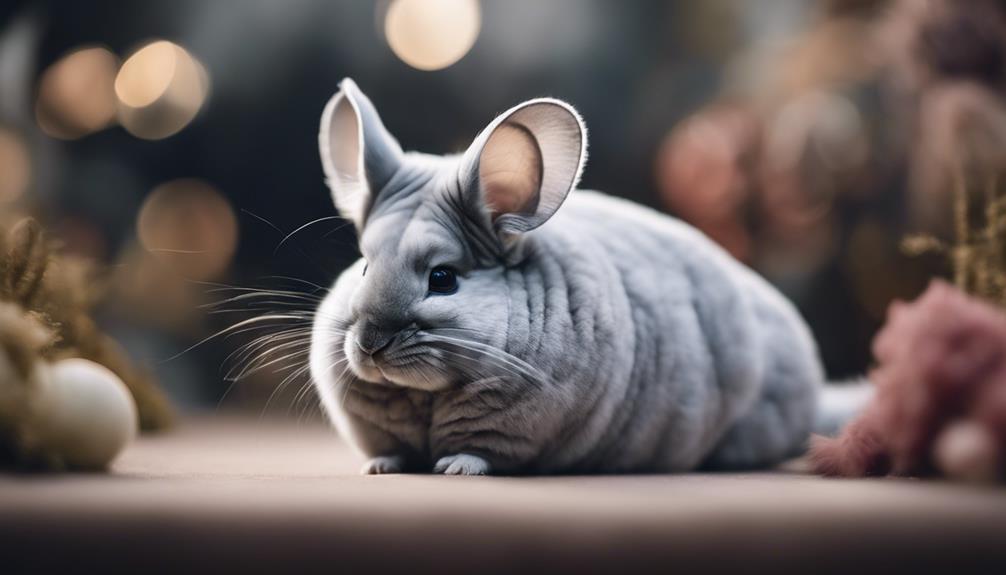
Among the less common chinchilla breeds, certain varieties exhibit unique genetic traits that set them apart from the more prevalent options in the classification system. Rare chinchilla breeds often present breeding challenges due to their specific genetic makeup. Breeders who work with these less common chinchilla varieties need to be particularly knowledgeable and attentive to ensure the health and well-being of the animals.
List of rare chinchilla breeds
- Blue Diamond – Known for its stunning blue-grey fur, the Blue Diamond is a result of specific breeding for this rare coloration.
- Violet – This beautiful, deep purple-grey color is highly prized and less common than standard colors.
- Sapphire – A rare bluish color variation that is distinct and highly valued among chinchilla enthusiasts.
- Charcoal – A darker variation that can range from a medium grey to almost black, with a unique depth to the color.
- Goldbar – A very rare coloration that has a golden or yellowish hue, making it quite distinctive.
- Chocolate – As the name suggests, this refers to chinchillas with a rich brown color, which is uncommon.
- Black Pearl – An extremely rare and sought-after color, characterized by a deep, even black coloration throughout the fur.
- Panda – Not a color breed per se, but the name is sometimes used to describe chinchillas with distinctive black and white markings resembling a panda bear, which are quite rare.
- Lavender – A very rare and subtle color variation that has a light purplish tint to the fur.
One of the fascinating aspects of rare chinchilla breeds is the occurrence of uncommon chinchilla colors resulting from genetic mutations. These mutations can lead to the development of striking coat colors that aren’t typically seen in more common chinchilla breeds. Exploring these rare color variations adds an element of intrigue to the breeding process, attracting breeders and enthusiasts alike.
While rare chinchilla breeds may pose challenges in breeding programs, they also offer a unique opportunity to delve into the complexities of genetics and witness the beauty of uncommon coat colors in these adorable creatures.
Classifying Chinchilla Colors
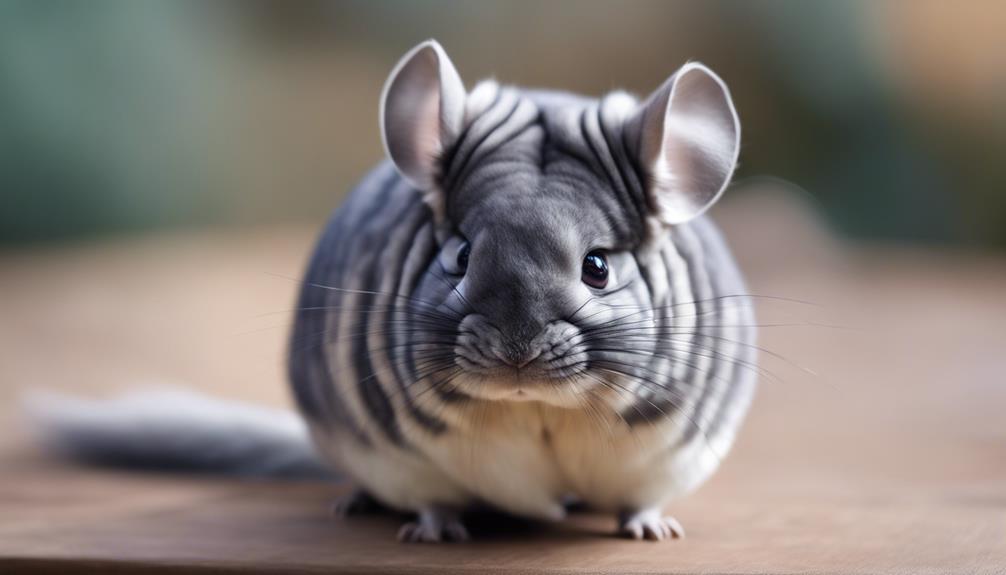
Chinchilla colors play a crucial role in their classification and identification. Understanding the basics of color genetics is essential to grasp how different hues and patterns manifest in these adorable rodents.
Furthermore, exploring rare color variations can shed light on the diversity within the chinchilla population.
Color Genetics Basics
Understanding the intricacies of color genetics is essential when categorizing chinchilla colors. When delving into color genetics basics, several key points come into play:
- Genetic Inheritance: Different coat variations are a result of specific genetic traits passed down from chinchilla parents.
- Breeding Patterns: Breeders must understand how certain colors are inherited to predict the outcome of breeding pairs accurately.
- Breeding Challenges: Some color traits are recessive, making it challenging to produce specific colors consistently.
- Coat Variations: Factors like dominant and recessive genes determine the range of colors and patterns seen in chinchillas.
Mastering these color genetics principles is crucial for breeders aiming to produce chinchillas of desired colors.
Rare Color Variations
In the realm of chinchilla coat colors, rare variations present a fascinating and intricate categorization challenge. These unique color variations often arise due to genetic mutations, creating breeding challenges for chinchilla enthusiasts. Understanding these rare color variations requires a deep dive into the genetics of chinchillas. Below is a table showcasing some of the rare color variations observed in chinchillas:
| Color Variation | Description | Genetic Mutation |
|---|---|---|
| Sapphire | Blue-gray hue with a silver sheen | Dilution gene mutation |
| Lavender | Soft purple-gray tone | Recessive gene mutation |
| Pink White | White coat with pink undertones | Pink-eyed white gene mutation |
| Charcoal | Dark gray to black coat | Polygenic inheritance |
Breeding Standards for Chinchillas
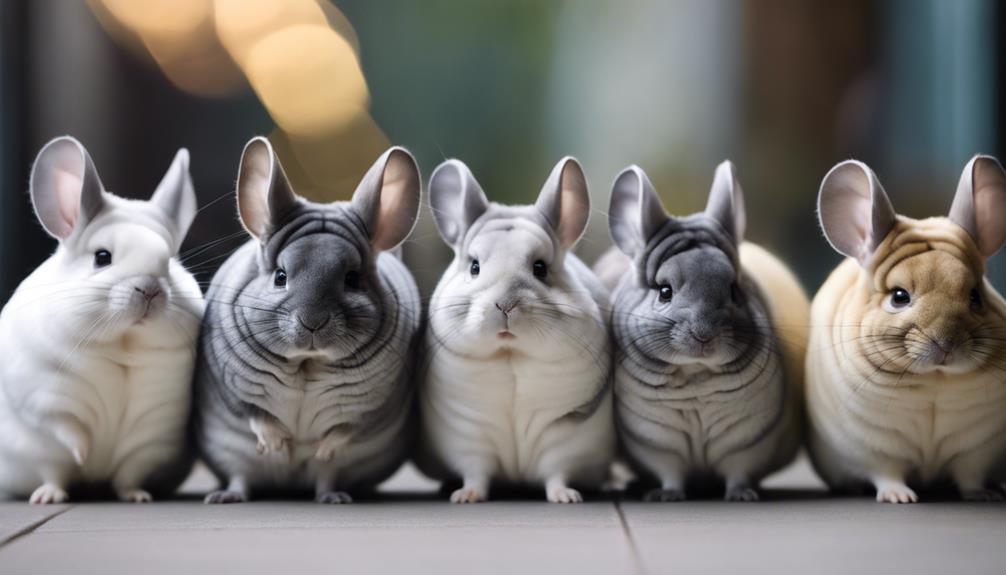
Chinchilla breeders adhere to specific breeding criteria to ensure the maintenance of breed standards and the preservation of genetic diversity.
Clarity in breeding standards is vital for producing healthy and high-quality chinchillas.
Understanding the importance of genetic diversity helps breeders enhance the overall well-being and resilience of these beloved small animals.
Breeding Criteria Clarity
To ensure breed purity and adherence to established standards, clarity in breeding criteria is essential for maintaining the integrity of chinchilla bloodlines. When it comes to breeding practices and selection, chinchilla breeders must pay close attention to genetic variation and inheritance patterns to produce healthy and true-to-type offspring.
Here are four key points to consider when establishing breeding criteria:
- Genetic Diversity: Ensuring a diverse gene pool to prevent inbreeding and maintain overall health.
- Physical Conformation: Selecting breeding pairs with ideal body structure and fur quality.
- Temperament Traits: Considering behavioral characteristics to promote desirable traits in offspring.
- Health Screening: Conducting health checks to prevent the transmission of genetic diseases.
Genetic Diversity Importance
Maintaining genetic diversity within chinchilla populations is crucial for upholding breeding standards and preserving the overall health and vitality of the species. Genetic variation is essential to prevent inbreeding, which can lead to genetic disorders and reduced fitness.
Breeders utilize various breeding techniques such as outcrossing and selective breeding to introduce new genetic material and avoid the negative effects of a limited gene pool. Through careful selection of breeding pairs based on genetic diversity, breeders can enhance desirable traits while minimizing the risk of hereditary diseases.
Future Trends in Chinchilla Breeding
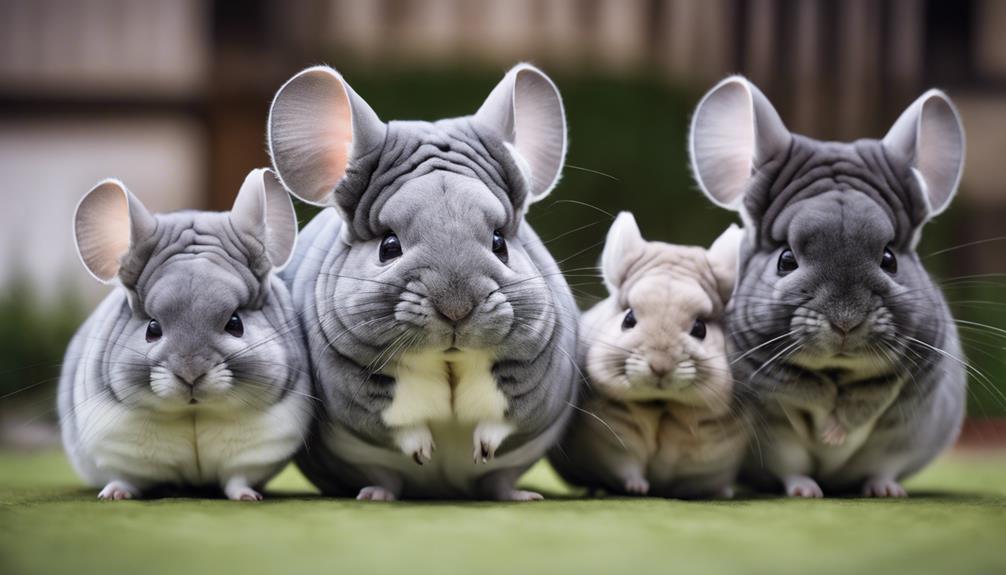
Looking ahead, breeders are expected to focus on implementing advanced genetic selection techniques to enhance desirable traits in chinchillas. This will help meet market demand while also considering the ethical concerns surrounding genetic modification in animals.
- Utilizing selective breeding to enhance fur quality and color variations.
- Incorporating genomic technologies to identify and select for specific genetic markers associated with health and temperament.
- Increasing focus on breeding for larger body size to cater to the demand for chinchillas as pets.
- Exploring sustainable breeding practices to ensure the long-term health and well-being of chinchilla populations.
These trends indicate a shift towards more precise and targeted breeding strategies that aim to improve the overall quality and characteristics of chinchillas while addressing concerns about the ethical implications of genetic modification. As breed popularity continues to grow, it’s essential for breeders to adapt their practices to meet the evolving needs of both the market and the chinchilla species.
Frequently Asked Questions
Can Chinchillas of Different Breeds Be Bred Together?
When breeding chinchillas of different breeds together, genetic compatibility is crucial. Challenges may arise due to unique characteristics of each breed. Hybrid offspring may exhibit a mix of traits, making it important to consider breeding goals carefully.
Are There Any Health Differences Between the Various Chinchilla Breeds?
Different chinchilla breeds may have varying dietary needs and exercise requirements. It’s crucial for chinchilla owners to understand these differences to ensure optimal health and well-being for their pets. Regular vet check-ups can help monitor any breed-specific health concerns.
How Do Chinchilla Breeders Determine Which Breeds to Cross for New Varieties?
In the quest for new varieties, chinchilla breeders combine breeds strategically, considering genetic diversity and desired traits. By utilizing crossbreeding techniques, they aim to enhance characteristics and create unique chinchilla types.
Are There Any Chinchilla Breeds That Are More Prone to Certain Genetic Health Issues?
Certain chinchilla breeds may have genetic predispositions to specific health issues due to breeding practices. Breeders monitor and select for desirable traits, but some breeds are more prone to conditions like dental problems or fur issues.
How Do Chinchilla Breeders Ensure the Preservation of Rare Breeds in the Future?
Chinchilla breeders maintain rare breeds by implementing conservation efforts that focus on genetic diversity. Challenges include avoiding inbreeding and ensuring healthy bloodlines. Breeding programs carefully select mates to protect the future of these unique chinchilla varieties.


